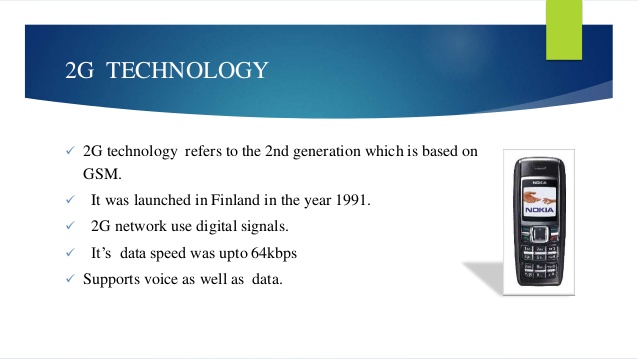2G (or 2-G) is short for second-generation wireless telephone technology (mobile telecommunications). Second generation 2G cellular telecom networks were commercially launched on the GSM standard in Finland by Radiolinja (now part of Elisa Oyj) in 1991. Three primary benefits of 2G networks over their predecessors were that phone conversations were digitally encrypted; 2G systems were significantly more efficient on the spectrum allowing for far greater mobile phone penetration levels; and 2G introduced data services for mobile, starting with SMS text messages. 2G technologies enabled the various mobile phone networks to provide the services such as text messages, picture messages and MMS (multi media messages). All text messages sent over 2G are digitally encrypted, allowing for the transfer of data in such a way that only the intended receiver can receive and read it.
After 2G was launched, the previous mobile telephone systems were retrospectively dubbed 1G. While radio signals on 1G networks are analog, radio signals on 2G networks are digital. Both systems use digital signaling to connect the radio towers (which listen to the handsets) to the rest of the telephone system.
2G has been superseded by newer technologies such as 2.5G, 2.75G, 3G, and 4G; however, 2G networks are still used in many parts of the world.

